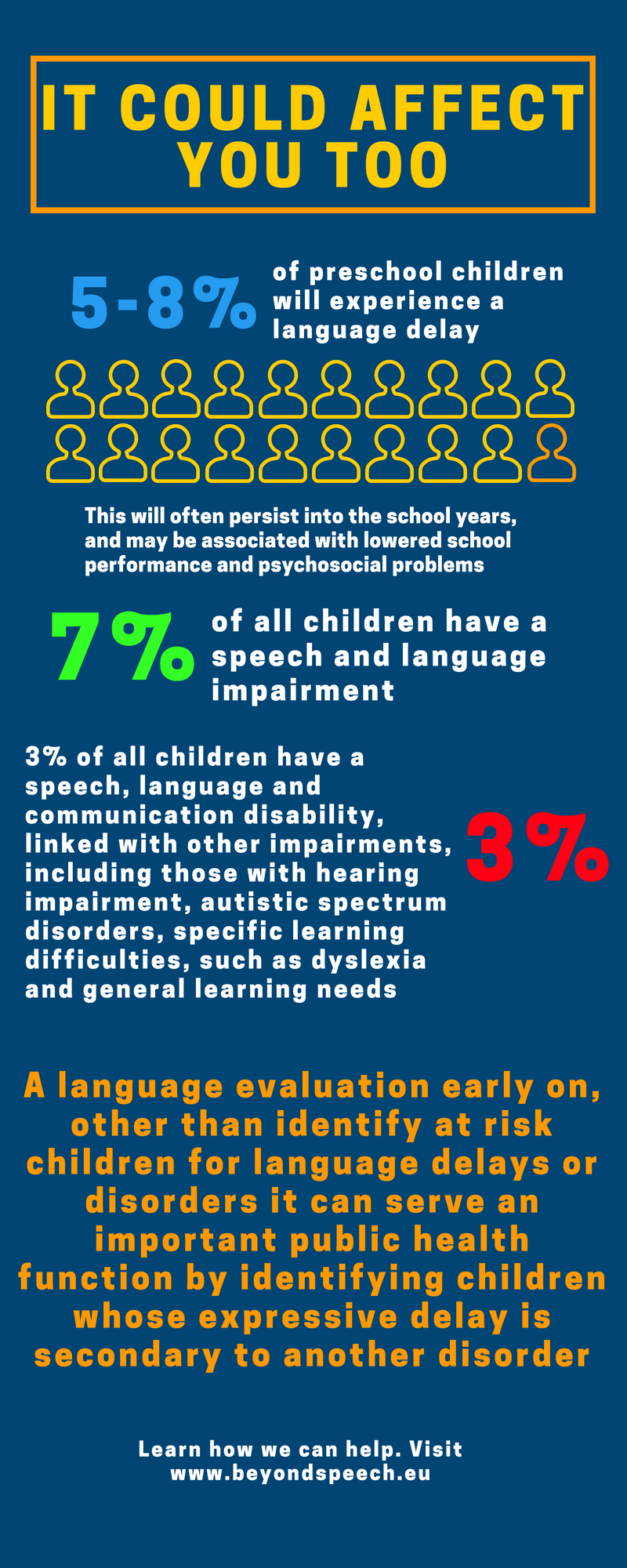
The benefits of dealing with speech and language delays early on are significant

Welcome to our blog!
February 2, 2018
Is group speech and language therapy beneficial?
October 14, 2018THE BENEFITS OF DEALING WITH SPEECH AND LANGUAGE DELAYS EARLY ON ARE SIGNIFICANT
Speech language therapists are often called to take a difficult decision between a late talker who shows normal variability, and a late talker who has a clinically significant language delay or disorder. If you found yourself wondering whether your child is a late talker, whether it is normal that your child has difficulty pronouncing certain sounds, whether it is alarming that the people in your child’s environment do not understand what they are saying, and if you spent time searching on the internet whether your child might have delayed speech or language skills compared to other children their age, then it is best to contact a speech language therapist for an assessment of your child’s speech and / or language skills.DEFINING THE “LATE TALKER”
Language delay or late emerging language is usually identified when children are around 2 years old and exhibit a small expressive vocabulary (less than 50 words). Researchers were specific in identifying two distinct types of late talkers. The children who had a delay in expressive vocabulary, but had a normal vocabulary in terms of comprehension, and those with delays in both expressive and receptive language (Thal, 2000, 2005a, 2005b). In addition to early vocabulary delay, late talkers have been shown to combine words later than other children (Dale et al., 2003), and demonstrate delays with phonological development (Carson, Klee, Carson, & Hime, 2003).“Speech and language delay affects 5% to 8% of preschool children, often persists into the school years, and may be associated with lowered school performance and psychosocial problems” (US Preventive Services Task Force, 2006).
THERE IS NO SUCH THING AS “TOO EARLY”
Being a mom myself, I have often been present in conversations where other moms express concerns relating to many aspects of their child’s development and well-being. And, while sharing experiences is great and can be valuable, I find that more often than not, parents are told to just "Wait and see” if their child will outgrow their speech or language delay.We have enough research evidence to suggest that this “Wait and see” approach is not the most beneficial. In fact, research suggests that reliable diagnosis that has been documented during infancy and toddlerhood, and let to early onset evidence based intervention, will result in a greater likelihood of an improved developmental trajectory (Kern Koegel, Koegel, Ashbaugh, Bradshaw, 2014). It has been also documented that early intervention is more cost and time efficient than a “Wait and see” approach.

SPEECH LANGUAGE THERAPISTS KNOW BEST
Speech language therapists (SLTs) are the professionals that spent many years studying language and cognition; and although children develop at their own pace, SLTs know exactly which milestones should be reached by a specific age. When these milestones are not reached, this can be a cause for concern that only a trained professional can evaluate. Therefore, no age is too early to meet with a SLT for an evaluation of your child’s language skills in order to decide if an intervention plan is needed.Because expressive language delay, is a symptom found in many conditions, children who are slow to talk are a heterogeneous group. Language delay is often secondary to another disorder (for example, hearing loss, autism spectrum disorder, or a neurological disorder) (Whitehurst and Fischel, 1994). Therefore, a language evaluation early on, other than identifying at risk children for language delays or disorders, it can also serve an important public health function by identifying children whose expressive delay is secondary to another disorder.
WHAT IS NEXT?
You have reached out to a SLT to receive an evaluation for your child. Will that always result in individualized intervention? Depending on the needs of the child, the SLT will decide the course of action. Sometimes, it involves, a family-guided intervention approach where caregivers are trained by the SLT to incorporate teaching and learning within a variety of daily routines and activities within the child’s and family’s lives. At Beyond Speech we run family-guided Intervention workshops, in order to help parents maximize the child’s potential at home. Sometimes, the plan of action might require the child to join a small treatment group lead by a SLT, while the caregivers follow a program at home. Other times it might require individual therapy delivered by the SLT, while other times the treatment plan might involve a combination of different approaches.The SLT will take into consideration all the information gathered from the evaluation, in order to decide the best course of action for the individual.
Written by: Dr. Marianna Christodoulou Devledian, CCC - SLP, Speech-Language Pathologist, MCD Beyond Speech Ltd.
References:
Bishop, D., & Edmundson, A. (1987). Language-impaired 4-year olds: Distinguishing transient Q-ompersistent impah'ment. JoumaJ ofS$1eecha nce]T eadrlg I)!sorties, 52, 156-173.
Carson, C., Klee, T., Carson, D., & Hime, L. (2003). Phonological profiles of 2-year-olds with delayed language development: Predicting clinical outcomes at age 3. American Journal of Speech-Language Pathology, 12, 28-39.
Dale, P., Price, T., Bishop, D., & Plomin, R. (2003). Outcomes of early language delay: I. Predicting persistent and transient language difficulties at 3 and 4 years. Journal of Speech, Language, and Hearing Research, 46.
Ellis, E.M., Thal, D.J. (2008). Early language delay and risk for language impairment. Perspectives on Language Learning and Education, 15(3).
Kern Koegel, L., Koegel, R.L., Ashbaugh, K., & Bradshaw, J. (2014). The importance of early identifi cation and intervention for children with or at risk for autism spectrum disorders. International Journal of Speech-Language Pathology, 16(1).
Rescorla, L. (2011). Late talkers: Do good predictors of outcome exist? Developmental Disabilities Research Review, 17, 141-150.
Sharma M., Purdy, S.C. & Kelly, A.S. (2009). Comorbidity of auditory processing, language, and reading disorders. Journal of Speech, Language and Hearing Research, 52(3).
Thal, D. (2000). Late talking toodlers: Are they at risk? San Diego, CA: San Diego State University Press.
Thal, D. (2005a). Early detection of risk for language impairment: What are the best strategies. Paper presented at the Congress on Language and Speech Disorders, Urbino, Italy.
Thal, D.(2005b). Early cietecdon of risk/or laWage !mpairment; What are fhe best strategies? Paper presented at the annual convention of the American Speech, Language, and Hearing Association, San Diego, CA.
Tomblin, B., Zhang, X, Buckwajter, P., & O'Brien, M. (2003). The stability of primary language disorder: Four ears after kindergarten diagnosis. Journal of Speech, Language, and Hearing Research, 46, 1283-1296.
Whitehurst G, Fischel J. 1994. Early developmental language delay: what, if anything, should the clinician do about it? Jounral of Child Psychology & Psychiatry, 35, 613-648.
